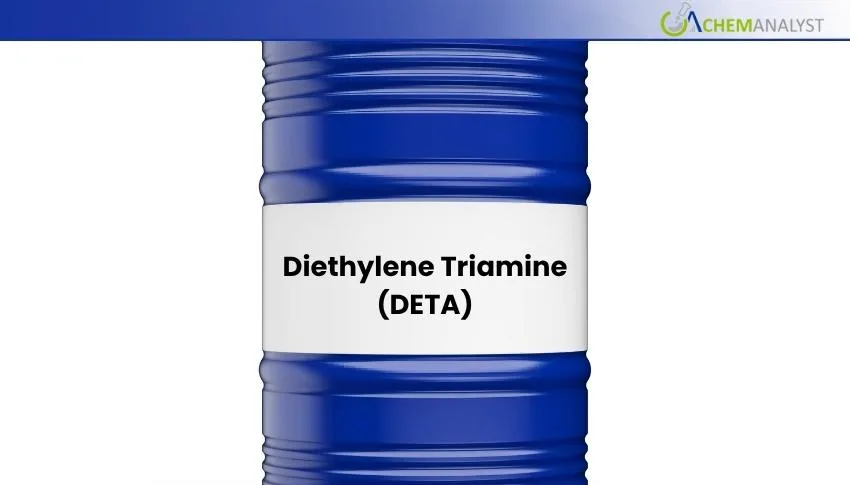Welcome To ChemAnalyst

Prices of Diethylene Triamine (DETA) in China and India have declined slightly in September 2025 following the high inventories, consistent production levels, and irregular downstream demand. There was a sharper 2.0% month-on-month decline in China while that of India declined by 1.5% from August.
Price correction in China was largely because of weak cost support from feedstock ammonia, which fell by 4.2% during the month. While ethylene dichloride prices rose by 4.8%, overall cost dynamics of production remained level. DETA producers were unable to transfer higher input costs due to high inventories and weak demand. Production levels were high, leading to continued supply surplus that put further pressure on the prices.
On the demand side, downstream consumption was weak for DETA. Compound fertilizer production rates were low, and the export market also failed to provide any relief, with new orders remaining unchanged. The majority of exporters focused on sending out backlog orders, limiting fresh momentum and weakening support in the market.
In India as well, the same pattern emerged with DETA recording a 1.5% price decline. Feedstock ammonia prices declined by 0.8% and ethylene dichloride saw a modest 1.5% increase. Despite having fixed production costs, producers were faced with stiff competition from overseas producers, particularly China and Japan. The sharp 9% decline in Drewry's Intra-Asia Container Index in the latter part of September lowered transportation rates, which made imported cargo more competitive and compelled local sellers to cut offers.
Domestic DETA output and imports remained high, which led to oversupply and compelled sellers to lower prices in a bid to liquidate stocks. However, demand fundamentals showed mixed signals across key sectors.
India's automobile retail sector supported the DETA consumption in the coatings and adhesives sector, as it witnessed a 5.22% year-on-year growth in September. The recovery was made easier by Navratri festivities as well as rollouts of GST 2.0 reforms that cut taxes and increased consumer confidence.
Agricultural off-take was supportive, with rains in September shutting 8% more than usual. The late monsoon withdrawal and improved groundwater recharge provided a solid base for kharif and rabi seeding, which had the potential to push DETA use in fertilizer and agrochemical consumption.
Transport fuel demand also rose by 4% month-to-month and 6% year-on-year, providing support to fuel additive consumption like DETA.
In the construction industry, the GST Council decision to cut tax on cement and maintain lower rates on coatings and paints was aimed at spurring demand. However, consumer hesitation to purchase raw materials ahead of anticipated price cuts led to subdued DETA absorption in applications for epoxy resin.
Despite these robust pockets, the overall market was influenced by supply overhangs and smart buying, and DETA prices remained weak in both India and China.
We use cookies to deliver the best possible experience on our website. To learn more, visit our Privacy Policy. By continuing to use this site or by closing this box, you consent to our use of cookies. More info.
